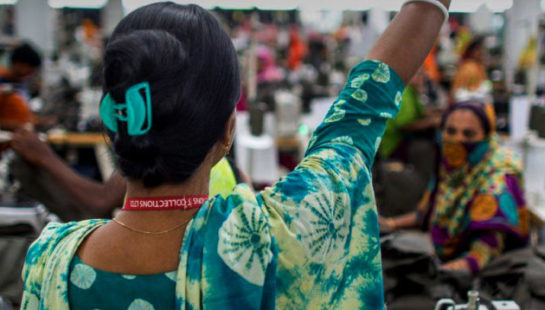Slavery: Just An Old Practice . . . Or Not?
Slavery may seem like an outdated practice that belongs in the history books, but it impacts over 40 million people today—27 million more than the estimated number of people who were captured and sold as slaves between the 15th and 19th centuries.
Sadly, many of the things we enjoy and consume today come from forced labour—the clothes we wear, the food we eat, the services we use. And while it’s all too easy to look away for the sake of a great bargain, this couldn’t be further from God’s response.
Psalm 10:17-18 says, ‘you, Lord, hear the desire of the afflicted; you encourage them, and you listen to their cry.’ Addressing those who are oppressors, James 5:4 says, ‘the wages you failed to pay the workers who mowed your fields are crying out against you. The cries of the harvesters have reached the ears of the Lord Almighty’.
God hears the cries of those who are oppressed: children working in a garment factory instead of playing with friends, women in servitude, those working 18-hour shifts for less than a living wage. As his people, do we hear their cries too? And are we willing to heed God’s call to ‘do justice and love mercy’ (Micah 6:8) today?
The best way to start listening to the cries of the oppressed is to learn about modern slavery, and what it looks like in 2022. Here are five facts to get you started, and what you can do to help.
1. Chances Are You’re Wearing Something Made By A Victim of Modern Slavery.
Modern slavery practices are deeply embedded in today’s fashion industry. Workers are exploited at all stages of garment production, from picking cotton and producing textiles to cutting and trimming the final garment. And COVID has only made things worse: a Sheffield University study of 1,200 workers in the garment supply chain found the risk of forced labour increased during the pandemic.
2. Taxi Driving And Domestic Work Are Just Some Of The Aussie Industries Where Slavery Exists
Of the estimated 16 million who were forced labour victims from the private sector in 2016, 15 percent were in manufacturing; 11 percent in agriculture and fishing; 18 percent in construction and 7 percent in mining. Some of the ‘high risk’ industries in Australia are agriculture, domestic work, food services, construction, taxi services, meat processing and hospitality.*
3. Most Victims Of Modern Slavery Are Women And Girls
Seventy one percent of overall victims of modern slavery are women and girls, so we need targeted measures and policy decisions by companies and government to address this reality. In our research for the annual Ethical Fashion Report, for example, we credit company policies and projects that directly address the human rights issues that disproportionately affect women.
4. Forced Marriage Is A Form of Slavery That Really Does Exist Today
Modern slavery occurs when a person cannot leave a situation because of ‘threats, violence, coercion, deception and/or abuse of power.’† This usually involves exploitation for commercial gain, but also includes forced marriage. According to the Walk Free Foundation, approximately 15.4 million people are victims of forced marriage.
5. You Are Uniquely Placed To Address Modern Slavery
Our region, Asia and the Pacific, has the highest prevalence of forced labour, hosting 62 percent of all victims of modern slavery worldwide. As Australians, we have a unique opportunity to leverage our proximity to countries where modern slavery is rife.
As Australian companies begin to accept the business case for addressing modern slavery, we can create change as consumers. Firstly, we can base our purchasing decisions on whether a brand is taking action to address modern slavery risks. An easy way to start is by downloading the Ethical Fashion Guide to inform your next clothing purchase.
Secondly, we can raise awareness about the actions companies are taking to better protect workers. We can speak up to brands that could be doing better, and we can talk to our friends or post on social media about how to make ethical purchasing decisions—so that others are not enslaved.
Together we can address modern slavery in our world and encourage companies to do the same.
Sources:
*International Labour Office and Walk Free Foundation, ‘The Global Estimates of Modern Slavery: Forced Labour and Forced Marriage’ (International Labour Office and Walk Free Foundation, 19 September 2017)
† Baker McKenzie and Lambrook Hampton Abensberg-Traun., Submission No 22 to the Joint Standing Committee on Foreign Affairs, Defence and Trade Inquiry into establishing a Modern Slavery Act in Australia


 Ally Turner
Ally Turner